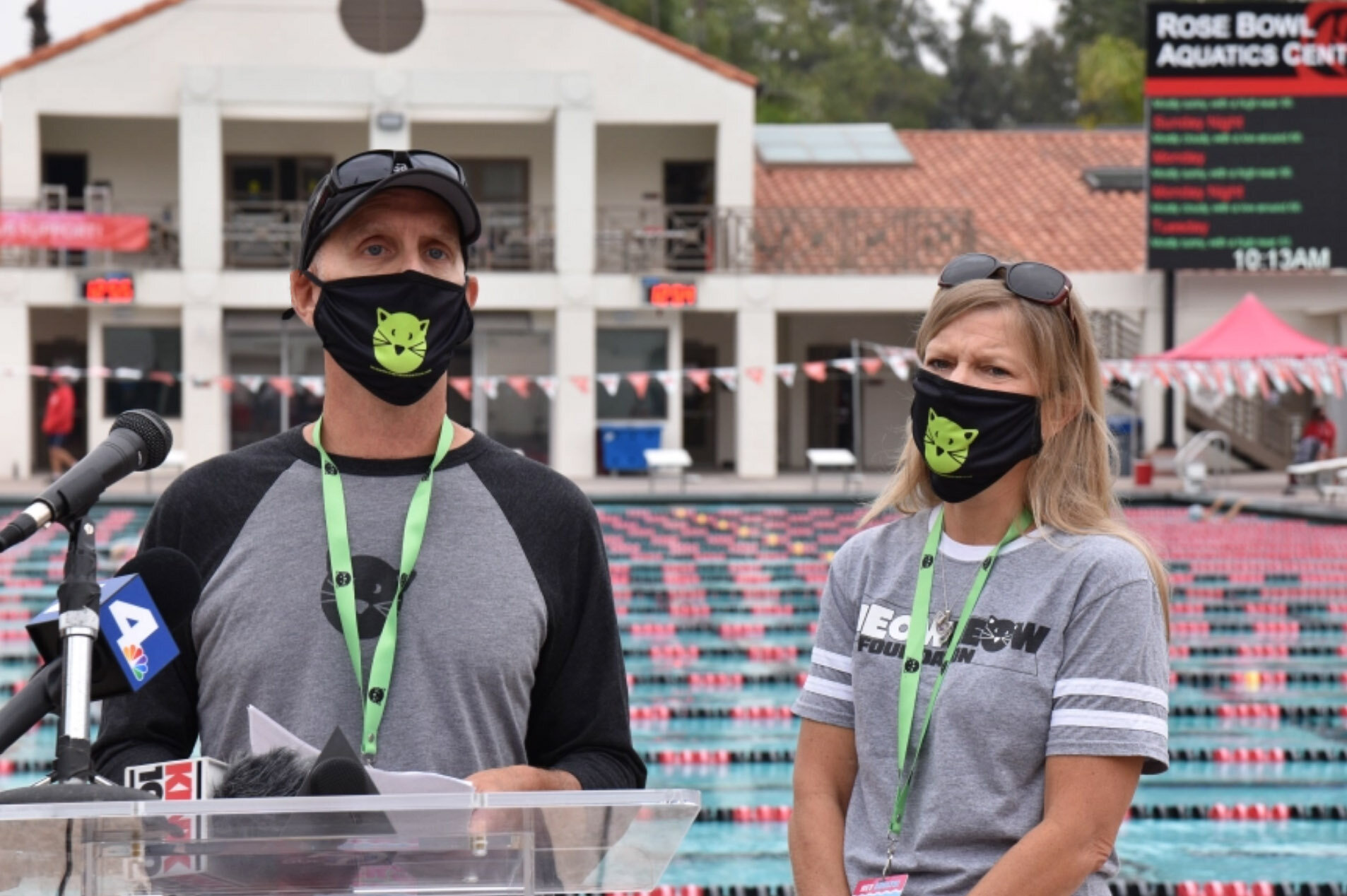Pasadena couple whose daughter drowned urges caution around pools
On the one year anniversary of their 6-year-old daughter’s death by drowning, Doug Forbes and Elena Matyas, urged parents to keep a watchful eye on their children this summer while around any body of water, big or small. July 1, 2020 in Pasadena, CA. (Staff photo by Bradley Bermont/SCNG)
By Bradley Bermont | bbermont@scng.com | Pasadena Star-News
PUBLISHED: July 2, 2020 at 2:40 p.m. | UPDATED: July 2, 2020 at 5:42 p.m.
One year ago, almost to the day, Pasadena parents Doug Forbes and Elena Matyas lost their only child to a drowning death at an Altadena summer camp. They’ve since dedicated their time to ensuring this won’t happen to another family again and, in a news conference on Wednesday, implored parents to keep a watchful eye on their little ones this summer.
Roxie Forbes, their 6-year-old daughter, drowned last June “at her summer camp while in the care of multiple adults,” Forbes said to a group of reporters. “So as the summer kicks in and people have been cooped up and bottled up by this devastating virus, we adults should remember these critical facts: Nine out of 10 child drowning cases occur with at least one adult present, yet only 1% of adults list drowning as a home safety concern.
“If adults keep their eyes on their children near any body of water — including bath tubs and even toilets — we can eliminate the fact that drowning is the leading cause of injury or death for kids under 4,” Forbes said.
“You do not want to wake up like us, every day, unable to hold the love of our lives in our arms.”
During the news conference, they were joined by five-time Olympic medalist John Naber, a former world-record holder for swimming.
He stressed that even Olympians have a lifeguard present when they’re in the pool.
Greg Geisler, chairman of cardiology at Huntington Hospital and a board member of the Rose Bowl Aquatic Center, implored parents to teach their kids how to swim and urged them to learn CPR.
He explained the mechanics of drowning, which involves water getting into the lower airways of the lungs, preventing the body from absorbing oxygen, which ultimately leads to brain damage and heart failure.
That is what normally occurs, he said, but there are other more rare forms of drowning too, known as “dry drowning.”
“This is very much a misnomer,” he said. “It’s not dry. There’s water getting into the lungs.”
Say, for instance, your child has an incident in the pool in which he has sucked some water into his airway, and he’s coughing, Geisler said. The body is creating a spasm in an ill-fated attempt to expel the water. When the spasms get so intense, air can’t make it into the lungs.
“This is very much like severe asthma, and this can happen even after the child has gotten out of the water,” Geisler said. It could happen 30 minutes or an hour afterward when the child exhibits a hoarse voice or shortness of breath.
“You’ll see shallow breathing and then, with a lack of oxygen, the child can pass out and the heart can stop,” he said.
The other so-called “dry drowning” tragedies unfold over days, Geisler said, and it only requires a small amount of water in the lungs.
“This small amount of water may not cause a problem now, but it can take days and even up to a week for that water to cause inflammation,” he said, adding that when there’s inflammation, fluid builds up in the lungs.
“This is exactly what COVID-19 does,” Geisler said. “The inflammation doesn’t allow the oxygen to get into circulation, so patients are essentially drowning at this time, but it happened days to a week after this initial event.”
Geisler urged parents to watch their children after they get out of water, monitoring for any coughing, voice trouble or wheezing. If you find that, he said to call 911 “because that airway can close at any time, and we need to seek emergency support.”
Geisler, like others who spoke Wednesday, encouraged parents to get swim instruction for their kids. Those lessons, speakers said, could help save their lives and give them a lifelong hobby.
Forbes underscored these points minutes earlier, before urging parents to stay vigilant at all times.
“Trust me when I tell you: There is no coming back from staring into the black, unresponsive eyes of a child who has drowned, especially when that child is your 6-year-old daughter,” Forbes said.

